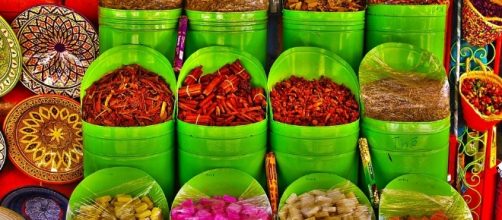Ceuta, Spain
We lumbered to a halt. A man casually walked his motorbike, on the back of which crates of food were precariously stacked a metre high, in front of the coach. As we waited for our driver to retaliate with a deafening blast of the horn our focus turned to a weather-beaten van. The grey rear doors, which were probably white once upon a time, had mercilessly given up and swung open allowing a dozen gallon bottles of juice to nosedive out. Liquid spewed out onto the sun-scorched tarmac while the Moroccan police officers, their faces unflappable, waved the driver on eager that he would not cause a backlog of traffic.
This was Ceuta – to Moroccans it is occupied territory and to the Spanish an autonomous city curiously perched on the Northern coast of the African continent. But to the rag tag group of travellers that I found myself part of, this geopolitical oddity served as our gateway into Morocco.
It was only around a week or so until Ramadan and multitudes of Moroccans were wisely making use of Ceuta’s duty-free prices, which made the border crossing more chaotic than usual. Our destination was the city of Tetouan. Our guide had promised we would experience a “different world” although the Spanish-Moroccan border had already hinted to us that any familiarity had been left eight miles across the Strait of Gibraltar in the commercialised Costa Del Sol.
Before leaving the resort in Spain for Morocco I, being a worrier and proud pessimist, frantically searched for the Foreign Office’s travel advice (particularly focussing on the bad bits). In their usual matter-of-fact way they informed me that “There is a high threat from terrorism in Morocco” as well as outlining the risks of violent and petty crime. With imagination now going into overdrive, I wondered if visiting was a smart or safe idea.
Tetouan, Morocco
During the short trip the unfamiliarity and, to my relief, hospitality of North Africa was on display in Tetouan’s souks. The souks, or markets, had a unique dynamism to them, people continually buying, selling and sampling as if there were no tomorrow - something not found in the laid-back Costa del Sol.
The narrow and uneven passageways, which twisted off in jaunty directions, were home to the exotic smell of a selection of African spices and fruits, with the potent whiff of fish serving as a reminder that Moroccans came to the souks for their daily shop. The olives, for which Morocco is famous for, clothing and crockery all contributed to bombarding us with a rainbow-variety of colours. This blended with the hubbub of haggling in Arabic to create an experience which would not have been possible back in our carefully laid out and sheltered all-inclusive resort.
I can look back now and recall the kindness and generosity of all who we encountered. From Mohammed, our guide, dressed in his loose-fitting Muslim dress - his hearty laugh, warmness and vast knowledge accommodating all in the group.
To the locals who offered delicious market food and smiled contently at the international brigade of British, French, Spanish and German buffoons who clumsily came to sample their culture.
As the ferry gestured us to return to Spain and we headed back to Ceuta, I thought at this point I would be content that I had, if only for half a day, ‘explored’ Africa and came back in one piece. However, something more fruitful had come from this mini-adventure. I had re-evaluated my outlook on Morocco and her people as well as teaching myself (and the Foreign Office too) that nothing is ever as bad as it seems. So, if you find yourself in sunny Spain then I would urge that you make the trip across the Strait and away from the norm.

